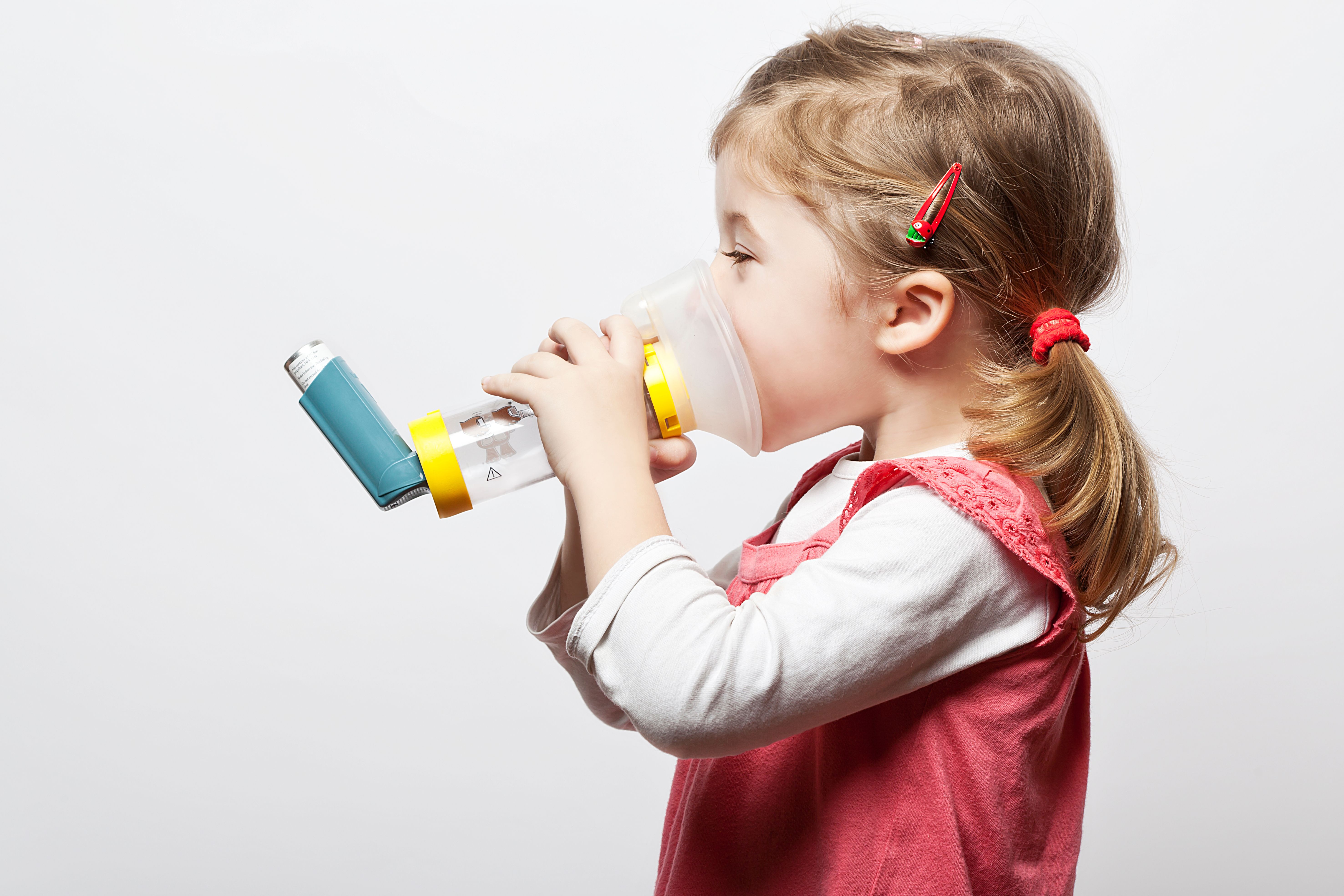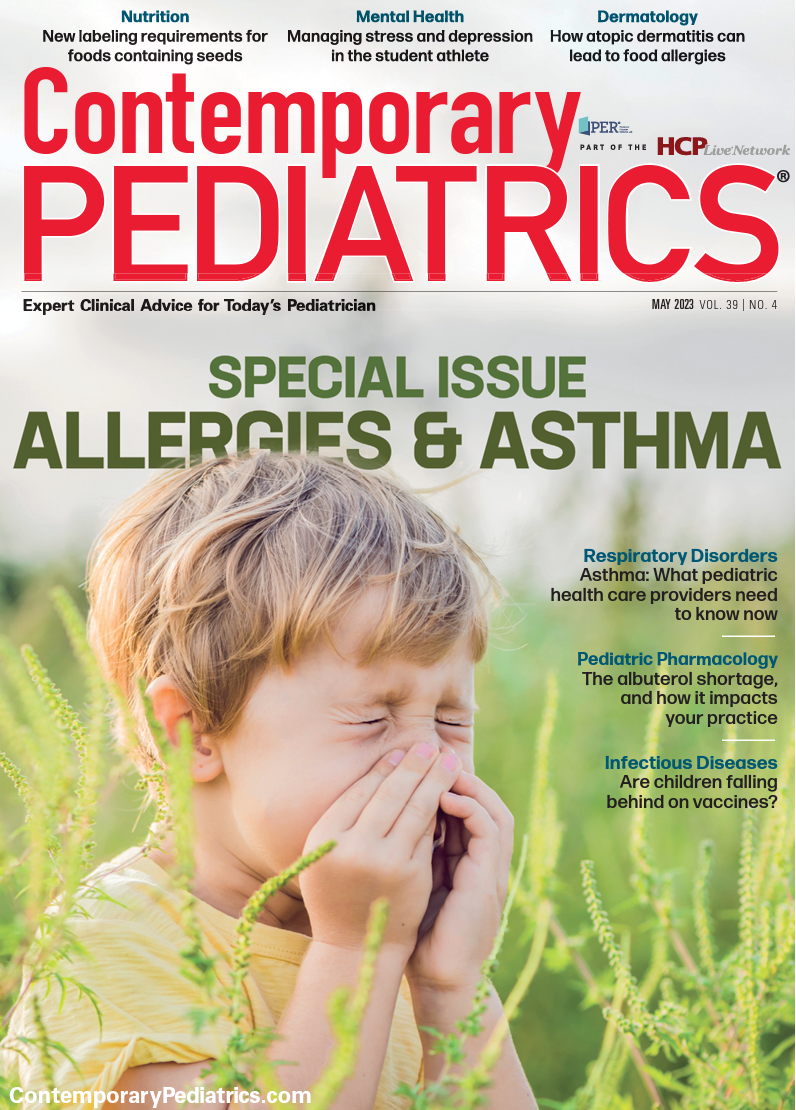Best practices for pediatricians in diagnosing and treating asthma
Hidden triggers and asthma mimickers can complicate this common childhood condition.
Best practices for pediatricians in diagnosing and treating asthma : © photomim - stock.adobe.com

According to the CDC, asthma is on the rise. It is estimated that asthma affects approximately 6 million children in the United States.1
- Asthma attacks are more prevalent among children, females, and multiple-race individuals.
- Asthma deaths are more prevalent among adults, females, and African American individuals.
- All pertinent asthma outcomes are more prevalent among groups of lower socioeconomic status.
- Asthma is more prevalent in the Northeast, particularly in inner city areas.1
Asthma as a medical diagnosis has not changed much over the years. Symptoms consist of repeated episodes of cough, shortness of breath, and wheezing.
Identify the triggers
Pediatricians should have a comprehensive discussion with caregivers about asthma triggers. They need to identify triggers including viral infections, allergens, chemical irritants, smoke exposure, and pollutants. Additionally, mold is a strong trigger for asthma, as well as a significant health concern for everyone in the household. It can easily go unnoticed, especially in older homes and more tropic environments.
Avoiding asthma triggers. To prevent infectious triggers, remind caregivers that children should be taught to wash their hands, limit touching their face, and avoid picking their nose or biting their nails. Children should also be tested for environmental allergies as allergens such as dust, dog and cat dander, and pollens can also be strong asthma triggers.
The patient who is not improving
Asthma mimickers. Pediatricians should always maintain a broad differential. Consider a foreign body, infections such as croup or bronchiolitis, anatomical abnormalities such as tracheostenosis or vascular ring, vocal cord dysfunction, and reflux.
Education is key. As a specialist, I often still see parents who do not understand the difference between albuterol and budesonide, who do not continue albuterol through the night when the baby is asleep, or who describe their child as blowing on the inhaler rather than breathing it in. Pediatricians should educate their patients on proper medication usage, including what the different medications do, when to start them, how frequently to administer them, and proper technique.
Social factors. Pediatricians should acknowledge psychosocial factors that may be at play. These include lack of access to medications, lack of time to administer medications, or separate households where the child is managed differently, among others.
Treatment
The mainstay of treatment remains avoiding asthma triggers, bronchodilators, and inhaled steroids. Additional therapies include leukotriene antagonists and oral steroids for acute exacerbations.
Changes in the management of asthma. The 2020 Focused Updates to the Asthma Management Guidelines include the following2:
- Ages 0 to 4: Step 1, short-acting β2 agonist (SABA) as needed and at start of respiratory tract infection add short-course daily inhaled corticosteroids (ICS). Step 2, daily low-dose ICS and SABA as needed.
- Ages 5 to 11: Step 1, SABA as needed. Step 2, daily low-dose ICS and SABA as needed.
- Ages 12 and beyond: Step 1, SABA as needed. Step 2, daily low-dose ICS and SABA as needed, or as-needed concomitant ICS and SABA.
- Step up or step down if able.
- In very allergic individuals, allergy immunotherapy may be started in patients with well-controlled asthma.
Biologics. There are many new biologics on the market for the management of asthma, including omalizumab, dupilumab, mepolizumab, benralizumab, and tezepelumab. These are injectable monoclonal antibodies that are very effective and have few adverse effects.
Omalizumab, mepolizumab, and dupilumab are the most widely used in pediatrics. Omalizumab is the oldest biologic for asthma and is approved for use in children 6 years and older with positive allergen sensitization and increased serum total IgE levels. Mepolizumab is approved for use in children 6 years and older with severe eosinophilic asthma. Dupilumab is approved for use in children 6 years and older with moderate to severe eosinophilic asthma, and in infants 6 months and older with moderate to severe atopic dermatitis.
These biologics offer an alternative for patients with poorly controlled asthma. Additionally, they can treat atopic comorbidities such as atopic dermatitis, chronic urticaria, nasal polyps, eosinophilic esophagitis, and hypereosinophilic syndrome, resulting in improved quality of life for our patients.
Other
Stigma regarding inhaled steroids. Stigma has been growing around the use of inhaled steroids and their effect on growth. Although their use does affect growth, it applies to chronic use of inhaled steroids, with an average 1.2-cm loss in final adult height. Despite this, parents should understand that uncontrolled asthma results in more emergency department visits and oral steroid use and can result in permanent lung damage.
Montelukast black box warning. Montelukast is a medication that works very well for patients. It also has the benefit of ease of use, as it is an oral medication that is administered once a day. Parents should be made aware of its updated black box warning for possible effects on mental health and behavior changes,3 including but not limited to suicidal ideation. Patients should be brought back in 2 to 4 weeks after initializing treatment to check for adverse effects.
Inhalers at school. Children should be permitted to keep inhalers with them at all times as they are an emergency medication. Additionally, many children have exercise-induced asthma and need to self-administer albuterol 30 minutes prior to exercise. Requiring them to go to the school nurse every time interferes with their education and puts undue pressure on the nurse.
COVID-19 and asthma. Fortunately, evidence from studies and real-world cases suggests that patients with asthma are not disproportionately more affected by COVID-19.4 However, studies and cases are limited in the pediatric population.
Albuterol. Currently there is an albuterol shortage (see “What you need to know about the albuterol shortages” on page TK). This relates specifically to the liquid nebulized form of the medication. Alternatives include the inhaled form of albuterol and levalbuterol.5
To read more from the May, 2023, issue of Contemporary Pediatrics®, click here.
References:
- Pate CA, Zahran HS, Qin X, Johnson C, Hummelman E, Malilay J. Asthma surveillance – United States, 2006-2018. MMWR Surveill Summ. 2021;70(5):1-32. doi:10.15585/mmwr.ss7005a1
- Expert Panel Working Group of the National Heart, Lung, and Blood Institute (NHLBI) administered and coordinated National Asthma Education and Prevention ProgramCoordinating Committee (NAEPPCC); Cloutier MM, Baptist AP, Blake KV, et al.2020 focused updates to the asthma management guidelines: a report from the National Asthma Education and Prevention Program Coordinating Committee Expert Panel Working Group. J Allergy Clin Immunol. 2020;147(6):1217-1270. doi:10.1016/j.jaci.2020.10.003
- FDA requires boxed warning about serious mental health side effects for asthma and allergy drug montelukast (Singulair); advises restricting use for allergic rhinitis. FDA. Updated March 13, 2020. Accessed April 7, 2023. https://www.fda.gov/drugs/drug-safety-and-availability/fda-requires-boxed-warning-about-serious-mental-health-side-effects-asthma-and-allergy-drug
- Broadhurst R, Peterson R, Wisnivesky JP, et al. Asthma in COVID-19 hospitalizations: an overestimated risk factor? Ann Am Thorac Soc. 2020;17(12):1645-1648. doi:10.1513/AnnalsATS.202006-613RL
- Albuterol in short supply? Here’s what to do. Allergy & Asthma Network. April 4, 2023. Accessed April 7, 2023. https://allergyasthmanetwork.org/news/albuterol-in-short-supply-heres-what-to-do/

Having "the talk" with teen patients
June 17th 2022A visit with a pediatric clinician is an ideal time to ensure that a teenager knows the correct information, has the opportunity to make certain contraceptive choices, and instill the knowledge that the pediatric office is a safe place to come for help.